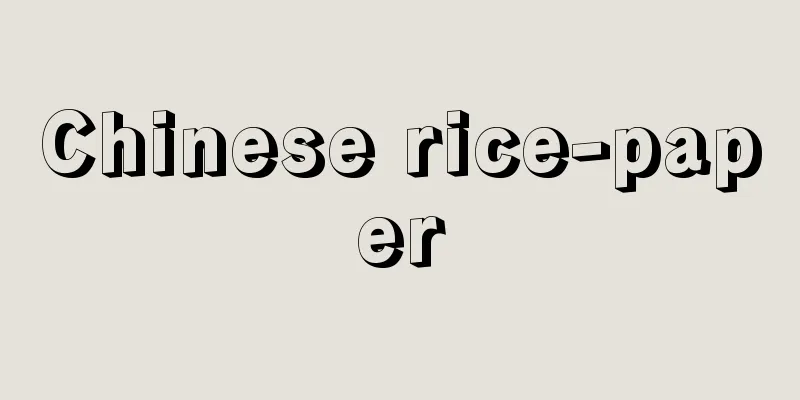Chinese rice-paper

|
…Young stems have a thick pith, which is extracted by cutting the trunk about 30cm. This pith is known as Chinese rice-paper and was used to make artificial flowers. Today, it is no longer used much, due to the popularity of plastic products. … *Some of the terminology that mentions "Chinese rice-paper" is listed below. Source | Heibonsha World Encyclopedia 2nd Edition | Information |
|
…若い茎には太い髄があり,幹を30cm余りに切ってこの髄をとる。この髄は通草紙(つうそうし)Chinese rice‐paperとして知られ,造花の材料に用いられた。今日ではプラスチック製品におされて,あまり用いられなくなった。… ※「Chinese rice-paper」について言及している用語解説の一部を掲載しています。 出典|株式会社平凡社世界大百科事典 第2版について | 情報 |
<<: Chinese taro (English spelling)
Recommend
New Trends in Haiku - Shinkei Kouhaiku
A haiku term. From around 1908 (Meiji 41), in &qu...
Shimokamagari [town] - Shimokamagari
A former town in Aki District, southern Hiroshima ...
Anatolian race - Anatolian race
…The southern band is made up of a large populati...
Perry, J.
…After returning to the UK, he became a professor...
Iizuka Kanshosai
...An inro maki-e artist from the late Edo period...
Houston, S.
…American politician. Born in Virginia. Served in...
Ibn Ra'iq (English spelling)
...The rulers of the dynasty sometimes called the...
Nashiki Shrine - Nashiki Shrine
The shrine is located in Teramachi-dori Hirokojia...
Prince Otomo
Year of death: Tenmu 1.7 (672) Year of birth: 4th ...
Northern elephant seal (English name: Mirounga angustirostris; northern elephant seal)
The elephant seal is a member of the genus Phocida...
Hagioka Shoin
A Yamada school koto performer. His real name was ...
Kozuke Province - Kozuke no Kuni
The ancient name of the province in Gunma Prefect...
Ḥalab (English spelling) Halab
…Population: 1,542,000 (1994). Arabic: Ḥalab. Loc...
Seto [town] - Seto
An old town in Nishiuwa District, in the center of...
Music Hall
A form of popular entertainment popular in Britain...









